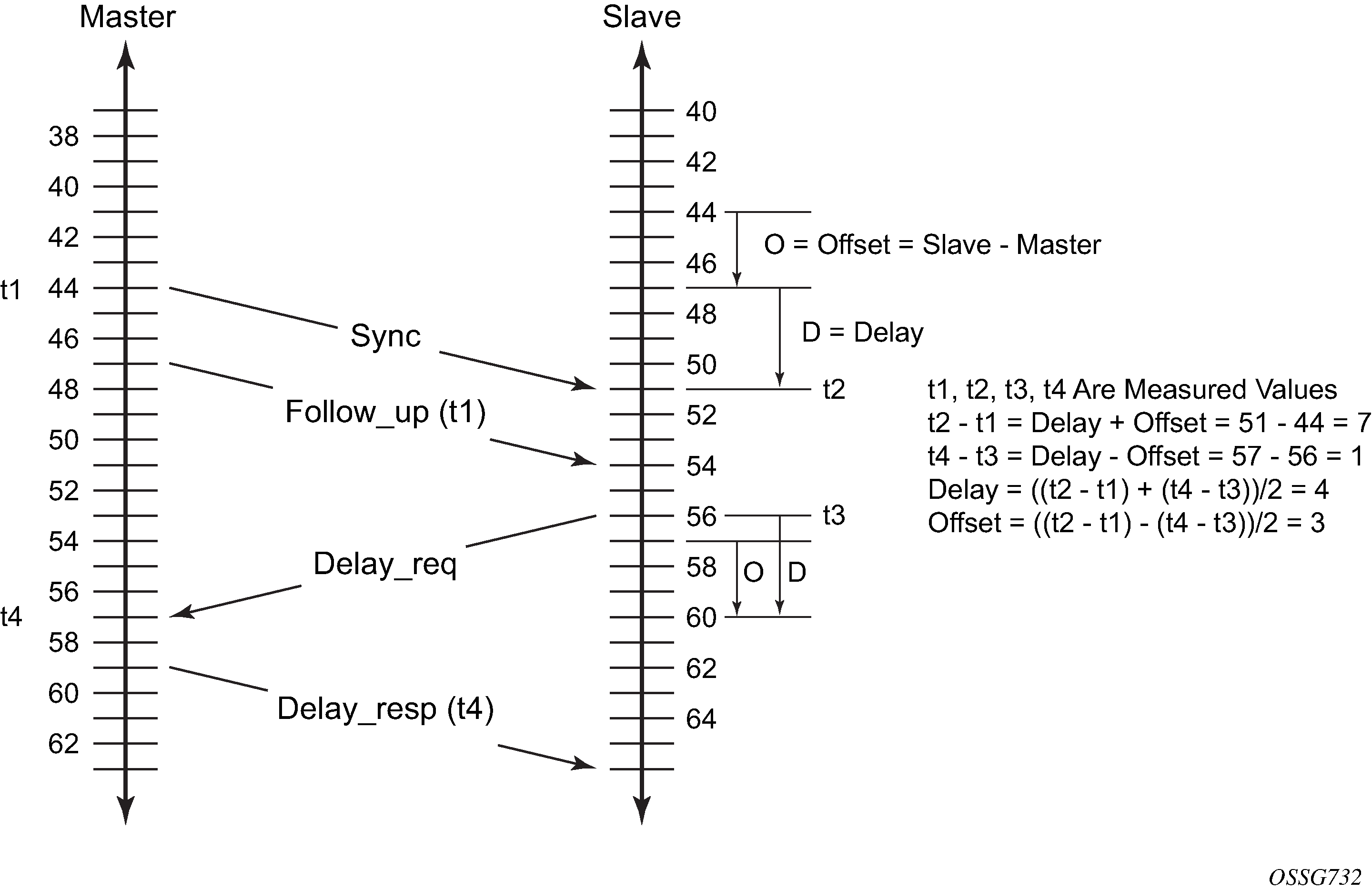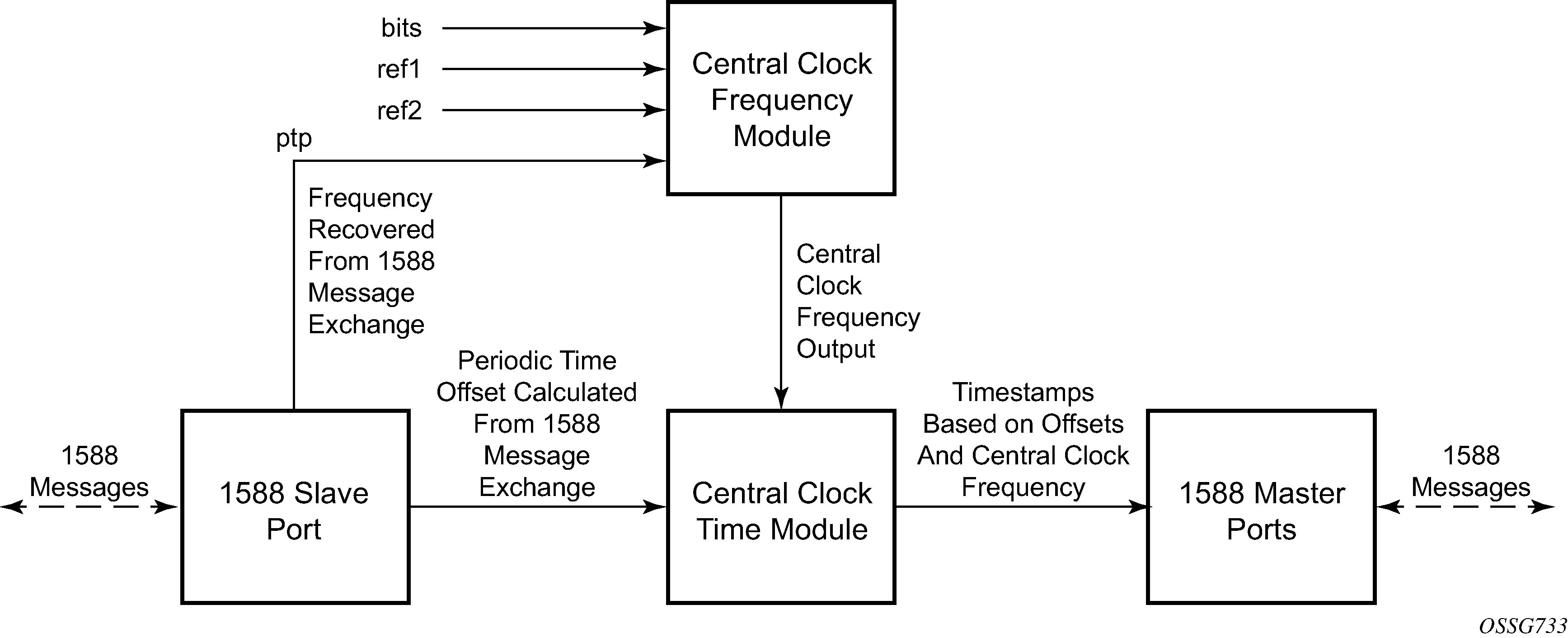The IEEE 1588v2 standard allows for synchronization of the frequency and time from a master clock to one or more slave clocks over a packet stream. This packet-based synchronization can be over unicast UDP/IPv4 or multicast Ethernet.
As part of the basic synchronization timing computation, a number of event messages are defined for synchronization messaging between the PTP slave port and PTP master port. A one-step or two-step synchronization operation can be used, with the two-step operation requiring a follow-up message after each synchronization message. Ordinary clock master and boundary clock master ports use one-step operation; ordinary clock slave and boundary clock slave ports can accept messages from either one-step or two-step operation master ports.
The IEEE 1588v2 standard includes a mechanism to control the topology for synchronization distribution. The Best Master Clock Algorithm (BMCA) defines the states for the PTP ports on a clock. One port is set into slave state and the other ports are set to master (or passive) states. Ports in slave state recovered synchronization delivered by from an external PTP clock and ports in master state transmit synchronization to toward external PTP clocks.
The basic synchronization timing computation between the PTP slave and PTP master is shown in Figure 1. This figure illustrates the offset of the slave clock referenced to the best master signal during startup.

When using IEEE 1588v2 for distribution of a frequency reference, the slave calculates a message delay from the master to the slave based on the timestamps exchanged. A sequence of these calculated delays contain information of the relative frequencies of the master clock and slave clock but has a noise component related to the packet delay variation (PDV) experienced across the network. The slave must filter the PDV effects so as to extract the relative frequency data and then adjust the slave frequency to align with the master frequency.
When using IEEE 1588v2 for distribution of time, the 7750 SR and 7450 ESS use the four timestamps exchanged using the IEEE 1588v2 messages to determine the offset between the router time base and the external master clock time base. The router determines the offset adjustment and then in between these adjustments, the router maintains the progression of time using the frequency from the central clock of the router. This allows time to be maintained using a BITS input source or a Synchronous Ethernet input source even if the IEEE 1588v2 communications fail. When using IEEE 1588v2 for time distribution, the central clock should at a minimum have a system timing input reference enabled. Figure 2 displays how IEEE 1588v2 is used for time distribution.
